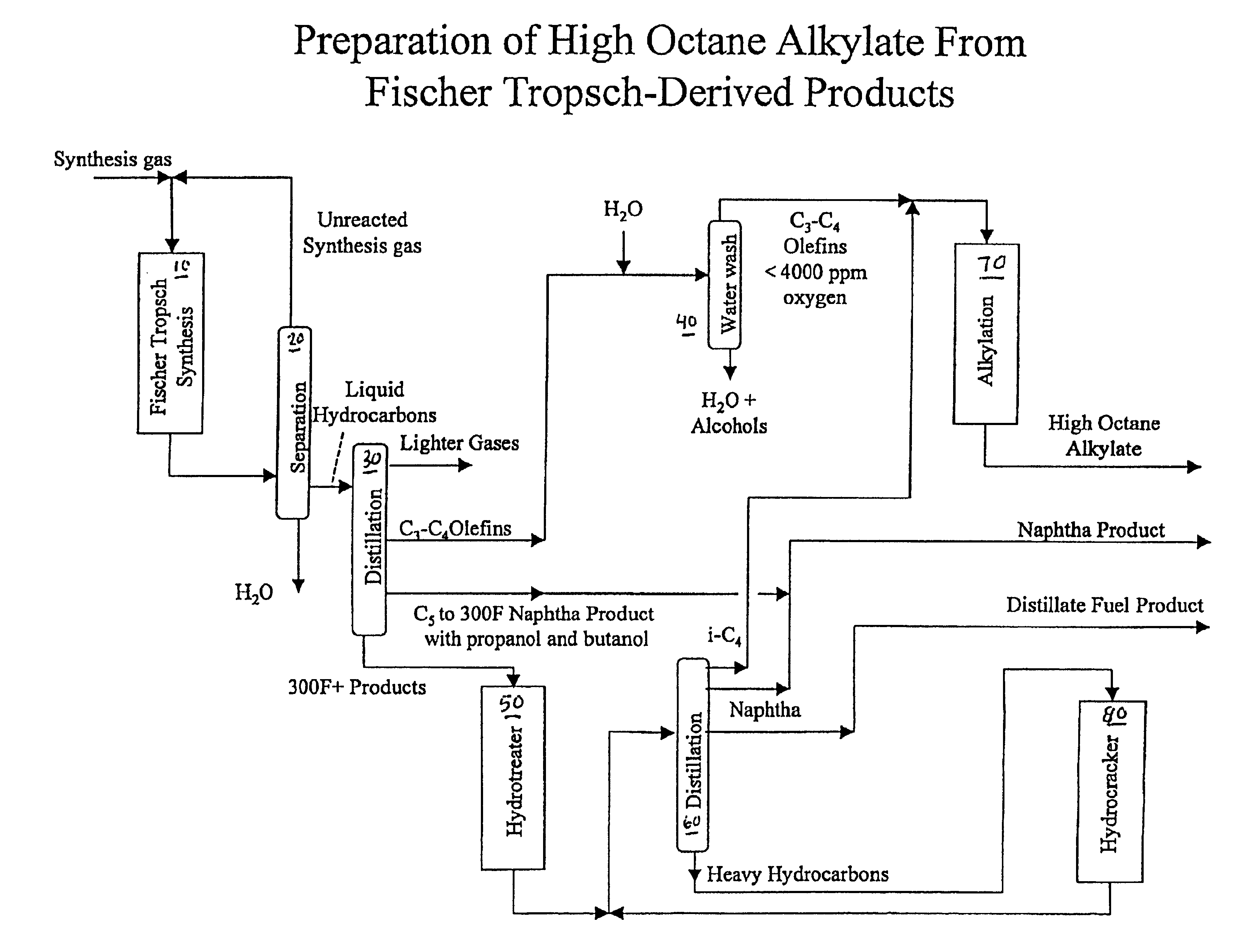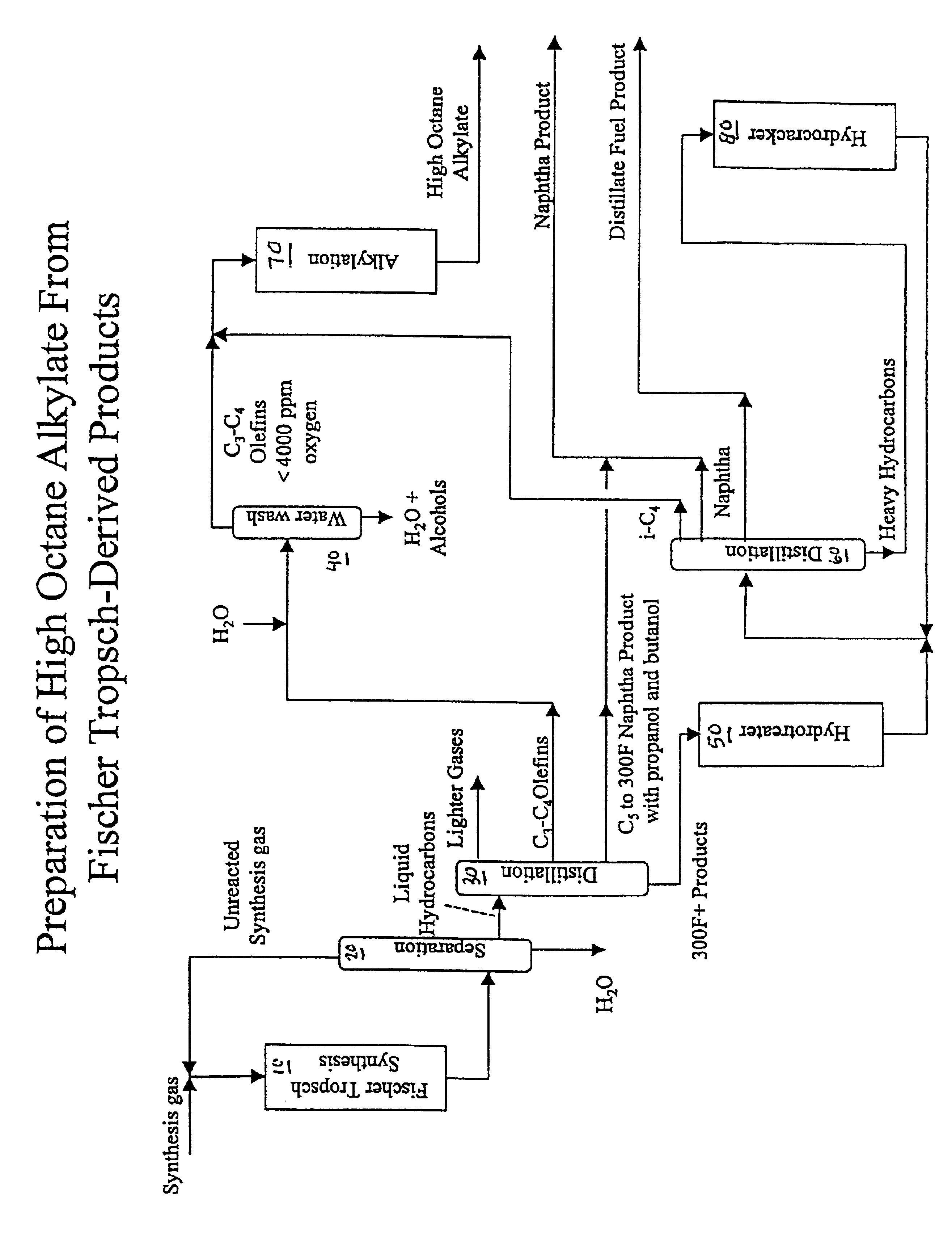Preparation of high octane alkylate from Fischer-Tropsch olefins
a technology of high octane alkylate and fischertropsch olefin, which is applied in the direction of hydrocarbon oil cracking, hydrocarbon preparation catalysts, organic chemistry, etc., can solve the problems of not being able to produce high-octane, not being able to constitute a good source of isobutane, and poor suited feedstocks
- Summary
- Abstract
- Description
- Claims
- Application Information
AI Technical Summary
Benefits of technology
Problems solved by technology
Method used
Image
Examples
example
With reference to the FIGURE, a synthesis gas is reacted over a cobalt catalyst in a slurry bed Fischer-Tropsch reactor (10). The product from the reaction includes a gas phase and a waxy liquid phase. The gas phase is cooled in a separation zone (20) to condense hydrocarbons. Unreacted synthesis gas which is not condensed, is recycled to the Fischer-Tropsch reactor. Water contained in the gas phase is separated from the condensed hydrocarbons by density differences. The condensed hydrocarbons along with the waxy liquid are distilled in zone (30) to form a light gas product (containing methane and ethane), a C.sub.3 -C.sub.4 stream that contains olefins and alcohols, a C.sub.5 -300.degree. F. product that also contains propanol and butanol, and a 300.degree. F.+ product. The C.sub.4 olefins in the C.sub.3 -C.sub.4 stream contain less than about 10 wt % isobutene. The C.sub.3 -C.sub.4 stream is contacted with an equal volume of water in water wash apparatus (40) at 20.degree. C. and ...
PUM
| Property | Measurement | Unit |
|---|---|---|
| research octane number | aaaaa | aaaaa |
| octane number | aaaaa | aaaaa |
| octane number | aaaaa | aaaaa |
Abstract
Description
Claims
Application Information
 Login to View More
Login to View More - R&D
- Intellectual Property
- Life Sciences
- Materials
- Tech Scout
- Unparalleled Data Quality
- Higher Quality Content
- 60% Fewer Hallucinations
Browse by: Latest US Patents, China's latest patents, Technical Efficacy Thesaurus, Application Domain, Technology Topic, Popular Technical Reports.
© 2025 PatSnap. All rights reserved.Legal|Privacy policy|Modern Slavery Act Transparency Statement|Sitemap|About US| Contact US: help@patsnap.com


